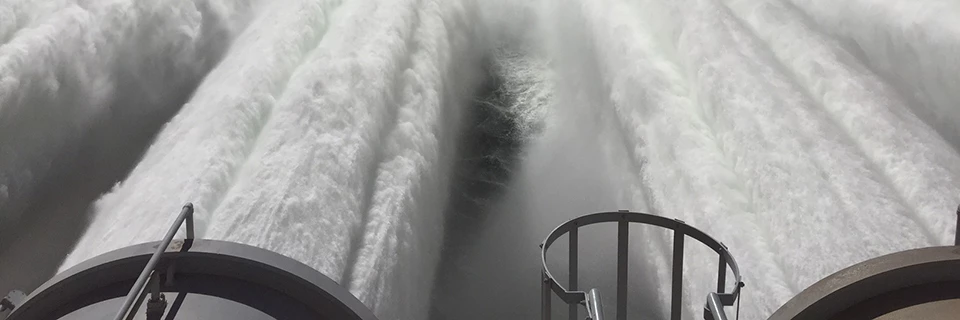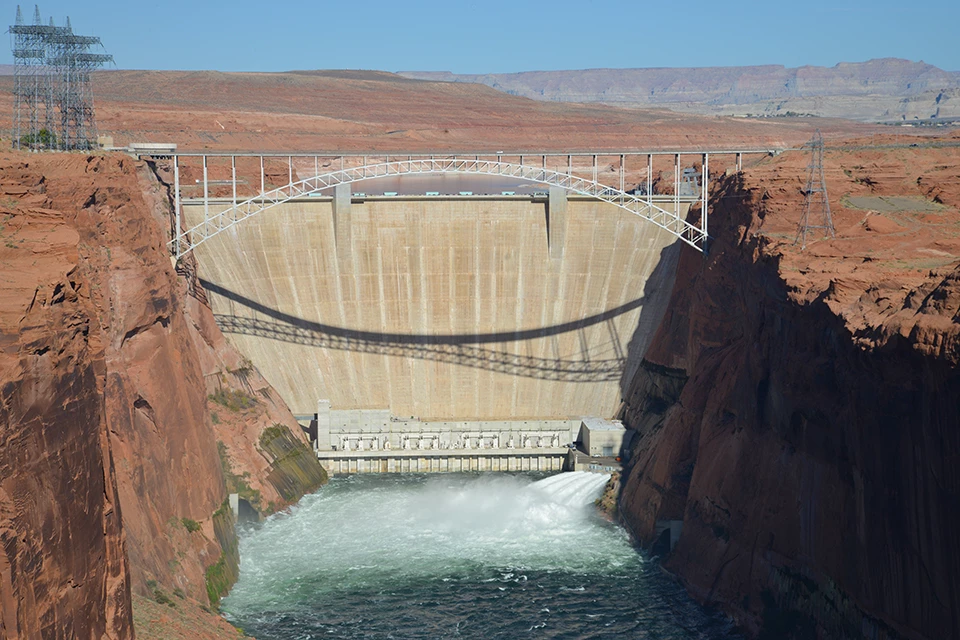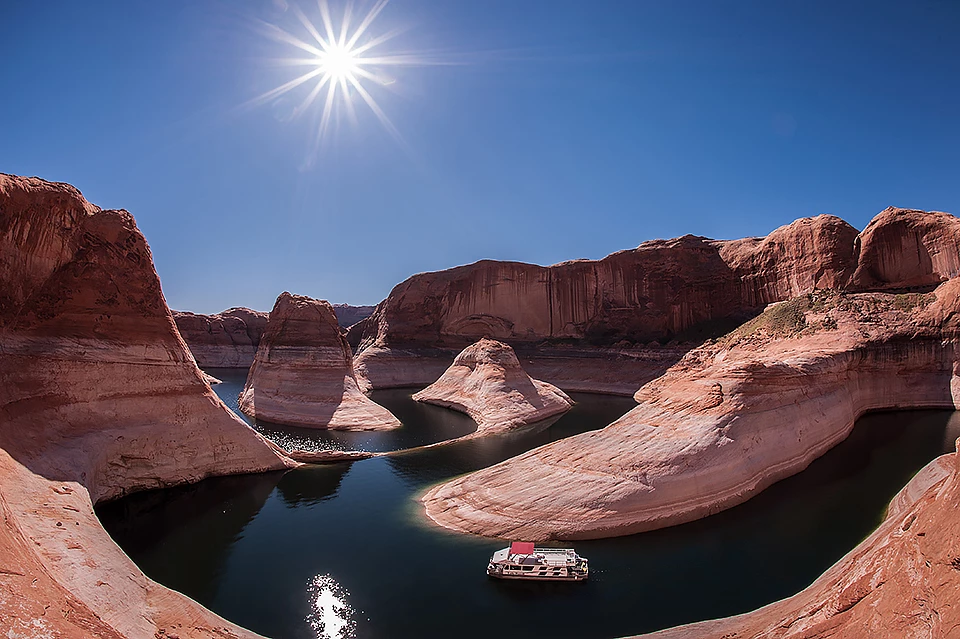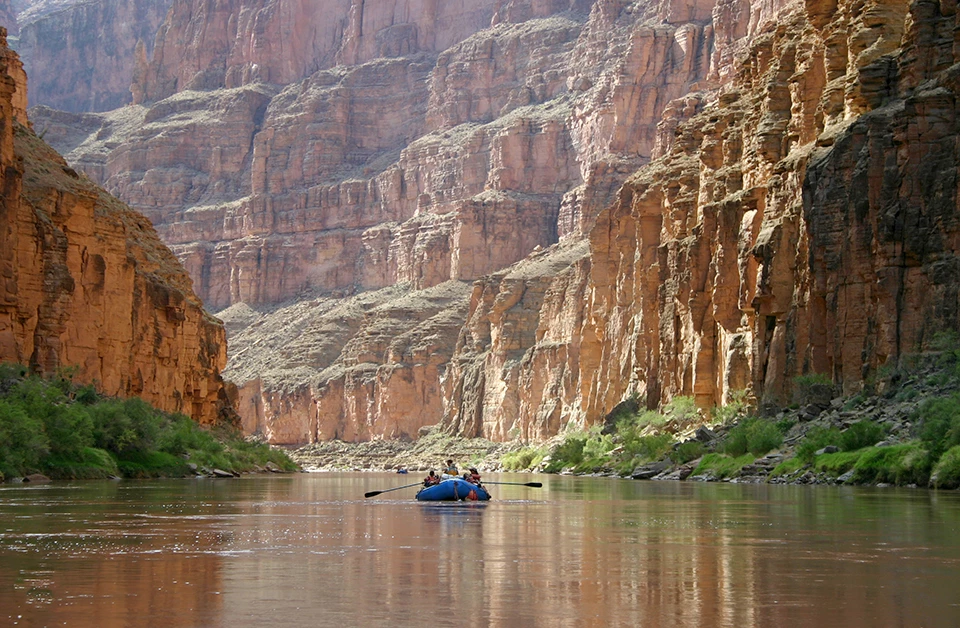Part of a series of articles titled Parks in Science History.
Article
Restoring a dammed river with experimental flooding
By Barret Wessel, University of Maryland College Park
This article, and others in the series "Parks in Science History", was written by a graduate student at the University of Maryland. The articles highlight the roles that national parks have played in the history of science and, therefore, the world's intellectual heritage. More articles and videos will be produced in the future.
This article, and others in the series "Parks in Science History", was written by a graduate student at the University of Maryland. The articles highlight the roles that national parks have played in the history of science and, therefore, the world's intellectual heritage. More articles and videos will be produced in the future.

COURTESY BUREAU OF RECLAMATION
One of the hot topics in environmental science is whether or not to remove dams to restore the natural flow of rivers. Over the centuries, thousands of dams have been constructed on rivers across the United States to store water or produce electricity. Some of these dams influence our national parks.
One example is Glen Canyon Dam on the Colorado River in northern Arizona. This dam is 710 feet tall and was completed in 1963 to produce electrical power. It created the Lake Powell reservoir and disturbed the river ecosystem in Grand Canyon National Park downstream. It is also a key player in one of the most interesting ecological experiments in decades, inspired by the work of Dr. John (Jack) Schmidt of Utah State University, and conducted by the Glen Canyon Dam Adaptive Management Program and the Department of Interior.
One example is Glen Canyon Dam on the Colorado River in northern Arizona. This dam is 710 feet tall and was completed in 1963 to produce electrical power. It created the Lake Powell reservoir and disturbed the river ecosystem in Grand Canyon National Park downstream. It is also a key player in one of the most interesting ecological experiments in decades, inspired by the work of Dr. John (Jack) Schmidt of Utah State University, and conducted by the Glen Canyon Dam Adaptive Management Program and the Department of Interior.
Dr. Schmidt, and colleagues who conducted research on the river in the early 1990s, realized that many features of the river ecosystem were created and maintained by seasonal floods caused by melting snow in the Rocky Mountains. The only way those features could be restored would be to release controlled floods from the dam. Flood releases could be conducted without endangering human life or property because all of the downstream area is within a national park. The controlled experimental floods provide lessons that can be applied in other parts of the nation.

COURTESY BUREAU OF RECLAMATION
Effects of a Dam
Glen Canyon Dam has had many complex effects on the Colorado River in the Grand Canyon. The very large size of Lake Powell allows complete storage of the spring snowmelt, preventing natural floods from reaching the area below the dam. The reservoir also traps the incoming fine sediment from the Colorado River watershed. Some of the effects of this change in water and sediment flow on areas downstream of the dam include:
- As downstream areas naturally erode, they are not replenished with new sediment.
- Many normally barren sandbars have become vegetated because floods no longer wash away plant growth. In some cases the new vegetation has become habitat for endangered species like the southwestern willow flycatcher.
- Because water released by the dam is drawn from deep cool layers in the reservoir, the stretches immediately below the dam experience consistently cool temperatures. Introduced sport fish like trout are thriving in those stretches, while many native fishes that have evolved to prefer cycles of cool and warm water have been lost. (Fortunately, further downstream in Grand Canyon National Park itself are warm and variable waters that support healthy populations of native fishes.)

NPS Photo / Gary Ladd
Trying Something Bold
This is where Dr. Schmidt and others made their contributions for managing the river: deliberate flooding. In his paper on the Colorado River, Science and Values in River Restoration in the Grand Canyon, Dr. Schmidt and his colleagues explore several management options:
- Do nothing, maximizing the economic value of the dam and letting the ecosystem continue to change as it has been.
- Manipulate water flow to benefit the new sportfish like trout.
- Open the floodgates occasionally to cause a modest flood, partially simulating the natural flow. This would bring back some of the original character of the river and allow other actions to restore native species.
- Modify the dam to allow water to flow from the top or the bottom of the reservoir. Because water separates into layers by temperature, this would allow managers to occasionally flood the river with warmer or cooler water to make the river downstream seem more natural to native fish.
- Remove the dam in an attempt to restore the river altogether.
So, What Happened?
The experimental controlled floods have nudged the river ecosystem back toward its natural state in some respects. The sandbars have grown again, but some vegetation and non-native fish remain. Native habitats were improved in many places, while non-native habitat remains in others. The floods clearly helped but didn’t fully restore the river.
Some organizations argue that restoration requires removing every dam in the country, but there is plenty of research left to do before taking such an action. Fortunately, our national parks offer an ideal place to do that research. Grand Canyon National Park is one of the few places in the world where researchers can safely open a dam to cause flooding and then study the consequences for natural resources and the values that people hold. Our national parks are preserved landscapes that hold environmental, historical, cultural, and scientific values that benefit everyone, and this work in the Grand Canyon National Park will help lead us to better national policies about how we manage our rivers.

NPS Photo / Mark Lellouch
Last updated: November 8, 2018
